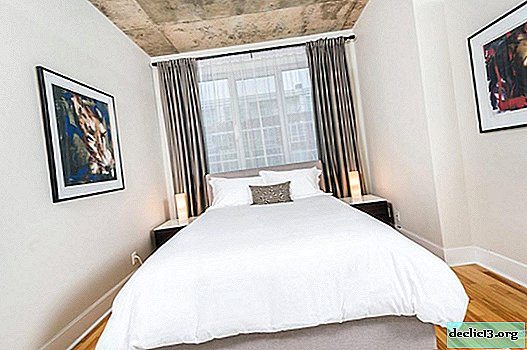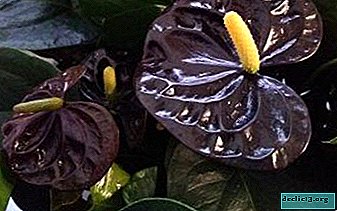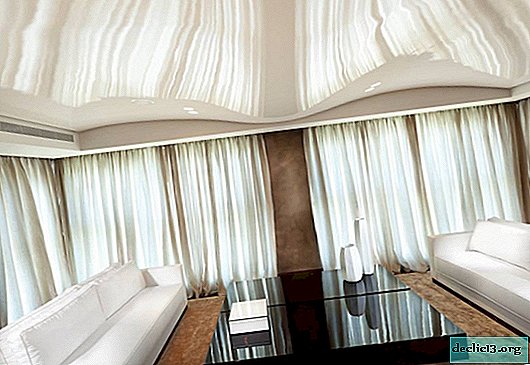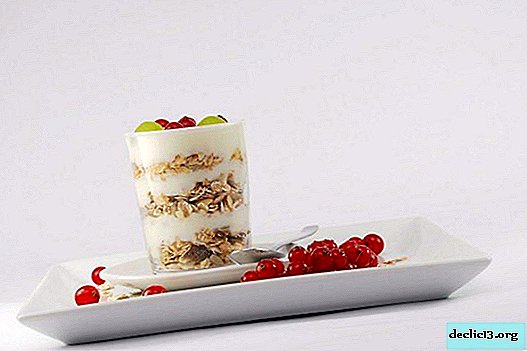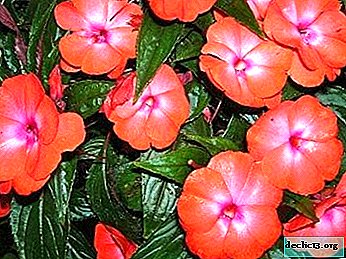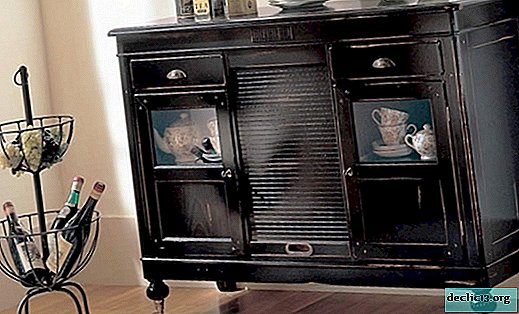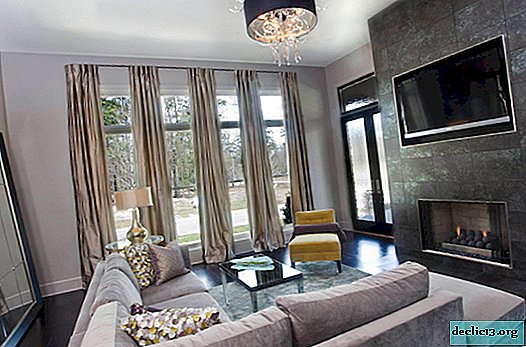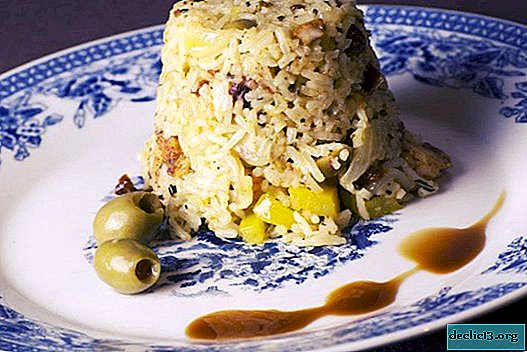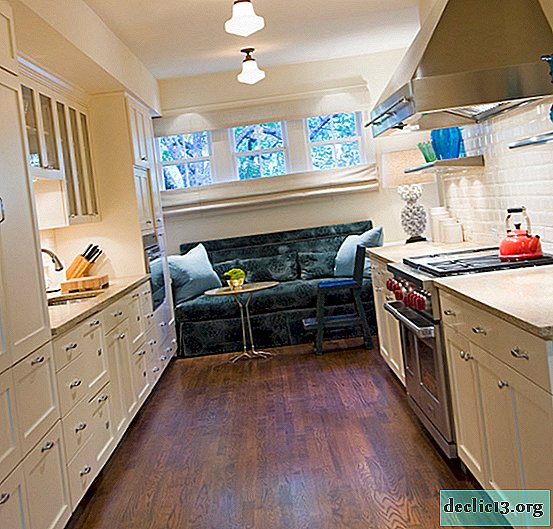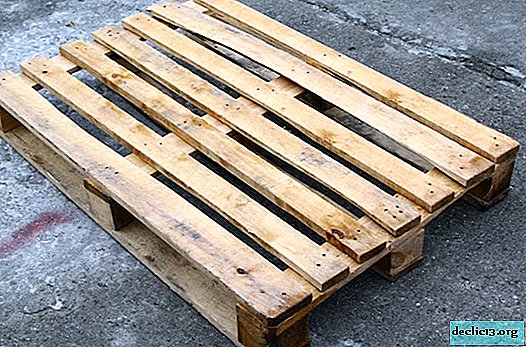Mason begonia houseplant: all about the features of appearance and proper care
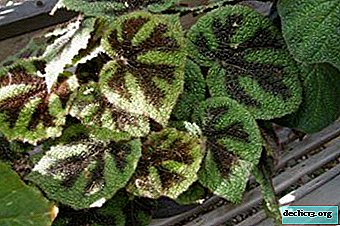
Begonia Mason is one of the favorite plants of flower growers. With proper care, it will quickly grow and develop, give positive emotions to you and your guests. It is of the greatest value due to its unusual leaves. Perhaps this is a distinctive feature of this begonia, although its size is not unimportant.
Compared to other begonias, our guest is very small, which is of great value for a certain circle of gardeners.
Description and features of appearance
Mason's begonia can be recognized from thousands even by a person absolutely indifferent to flower growing. Her leaves decorated with an extremely unusual pattern, on each sheet a “cruciform” pattern of dark brown color is “drawn”.
On a note. This begonia can be combined with absolutely any interior.Mason's begonia was first discovered in New Guinea, after which it quickly found lovers around the world. The height of this begonia usually does not exceed 30 centimeters.
It is of great value because of its leaves.Therefore, it has the following features:
- In the spring-summer period, small flowers of pale green color appear on the plant.
- Each begonia leaf can grow up to 20 cm in length, the color range of which ranges from yellow to green. The older the plant, the more its leaves become silvery.
- The leaves are large, with a sharp end, heart-shaped, have a warty surface.
- Nondescript pale flowers are collected in a panicle inflorescence and rise high above the leaves, but do not bear decorative value.
Photo
In these pictures you can see begonia in all its glory:





Lighting
This begonia loves bright and scattered sun rays, or you can arrange the plant in partial shade.
Attention! In no case do not allow direct sunlight to fall on begonia, it is fatal to it and can lead to the death of a houseplant.The soil
As with all other begonias, the earth must be loose and enriched with various trace elements. Peat and chernozem can be added to the earth in a ratio of one to one. You can buy soil at any flower shop, or mix it yourself. Adult begonia is not particularly fastidious to the soil, but when planting and germinating, the soil should be loose, have a large supply of oxygen, and should also be enriched with mineral and trace elements. Soil is one of the most important factors affecting the beauty of your begonia.
Proper care
- The most favorable is the temperature range for Mason begonia - from 18 to 25 degrees Celsius, but do not forget to maintain a stable air humidity.
Too low a risk of partial death of the plant. The optimum level of humidity is 60 percent.
- Since our begonia is a herbaceous species, the dormancy lasts from October to February. To transfer the plant to this state, watering is reduced and wilted shoots are cut. Some experts advise keeping begonia tubers in the dark at a temperature of 10 to 12 degrees Celsius for up to two months.
- The best growth properties are manifested when the plant is in partial shade.
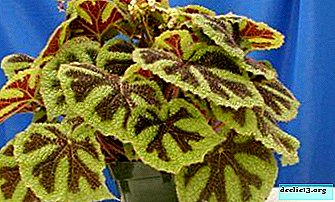 Watering is done only after the top layer of the earth has completely dried. To ensure the begonia the humidity necessary for it, the pot should be placed on a tray of water, but so that the pot is not in the water, or placed on wet peat.
Watering is done only after the top layer of the earth has completely dried. To ensure the begonia the humidity necessary for it, the pot should be placed on a tray of water, but so that the pot is not in the water, or placed on wet peat.In order for the pot not to be in the water, pebbles are poured onto the tray, or the pot itself is set on an inverted saucer.
If the humidity level is too high, begonia rots, so do not overdo it.
- On hot summer days, the air around the begonia is sprayed, but so that water does not get on the leaves.
- The room in which begonia is located must be periodically ventilated, but so that the plant itself is not blown by a draft.
- Transplantation is carried out only in cases of emergency.
Diseases and Pests
Begonia is most susceptible to four diseases, but only two will be described in detail.
- Powdery Mildew It is a fungal disease caused by a fungus called Erysiphales. It develops on leaves and on surface shoots, representing a white coating, which due to its location is difficult to detect in the early stages. The disease leads to desiccation, and subsequently to rotting of the leaves. You can destroy the fungus by spraying with special drugs.
The more common name for the fungus is mycelium. If desired, it can be grown independently on bread.
- Gray rot. Like powdery mildew, begonia is covered with a touch, but this time gray-white or completely gray. This disease can be detected without any problems at any stage. As a therapeutic agent, trichodermin can be used.
- Bacterial spotting. Blots of brown-red or brown spots appear on the leaves.
- Ring spotting. The appearance of white spots with a clear shape.
In addition to these basic ones, Mason's begonia can be disturbed by the following diseases: mealybug, leaf death, whitefly.
On a note. The best solution is powder in ampoules. Such a tool has proven itself very well, especially considering the price / quality ratio.Begonia can be affected by the following parasites: spider mites, white moths, and so on. The tick is considered the most annoying, the struggle with which is complicated by the fact that it quickly lays larvae. In this regard, the processing will have to be performed 3-4 times a week, approximately within one to two months.
Propagation Features
Due to the lack of seeds, this begonia can be propagated only with the help of cuttings. Propagation by cuttings. Like the vegetative one, it has two subtypes.
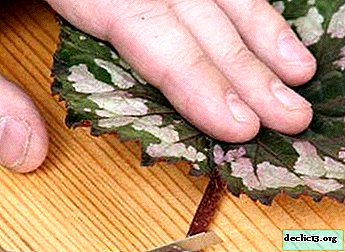 Leaf cuttings. This method is necessary when it is necessary to obtain a large amount of planting material. To begin with, the most healthy leaf is selected. Next, he cut it into small squares.
Leaf cuttings. This method is necessary when it is necessary to obtain a large amount of planting material. To begin with, the most healthy leaf is selected. Next, he cut it into small squares.Squares should not be more than two centimeters. Further, these pieces are located on a substrate, in which peat and sand are mixed in equal parts. Further, everything is covered with a film of polyethylene. Ideally, two or three weeks later, the petioles should be rooted, until this point they can not only be touched, but generally removed the film.
After a period of three weeks, in case of rooting, you can open the film and ventilate them, but not longer than 30 minutes, and with each ventilation time is increased.
- Stem cuttings. For reproduction, a stem with 1-2 buds is selected. Next, you need to make a cut under the lower kidney, and above the top at a distance of 50 millimeters from the kidney. If there are leaves on the handle, then they are half cut. Further, a shallow hole is made in the substrate, into which the stalk is inserted. Then everything is covered with a plastic film and aired every 2-3 days. Instead of a film, you can use a bottle. Rooting usually occurs between 15 and 30 days.
Reference. In cuttings with the same begonia, the rooting period can be different.
How to grow begonia from a leaf:
Summing up, I would like to say that Maxon's begonia is appreciated for its leaves. In terms of decorative flowering, it does not stand out for its flowers, which are very small, and are not able to attract attention, which just can not be said about its decorative leaves.
Also, the propagation of this begonia, which has completely no seeds, may turn out to be especially interesting for the grower, therefore reproduction is possible only with the help of a leaf and stem cuttings, which is quite interesting

 Watering is done only after the top layer of the earth has completely dried. To ensure the begonia the humidity necessary for it, the pot should be placed on a tray of water, but so that the pot is not in the water, or placed on wet peat.
Watering is done only after the top layer of the earth has completely dried. To ensure the begonia the humidity necessary for it, the pot should be placed on a tray of water, but so that the pot is not in the water, or placed on wet peat. Leaf cuttings. This method is necessary when it is necessary to obtain a large amount of planting material. To begin with, the most healthy leaf is selected. Next, he cut it into small squares.
Leaf cuttings. This method is necessary when it is necessary to obtain a large amount of planting material. To begin with, the most healthy leaf is selected. Next, he cut it into small squares.